-
Fukushima’s
Spring Spectacular
“Hanamiyama”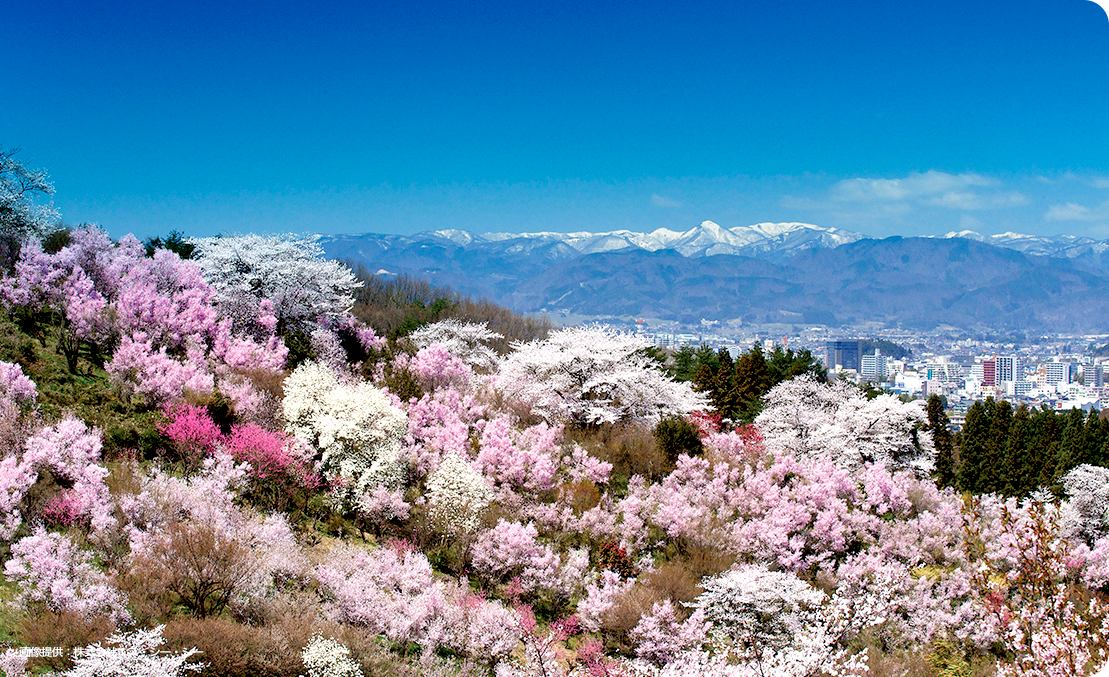
-
Fukushima’s
Spring Spectacular
“Hanamiyama”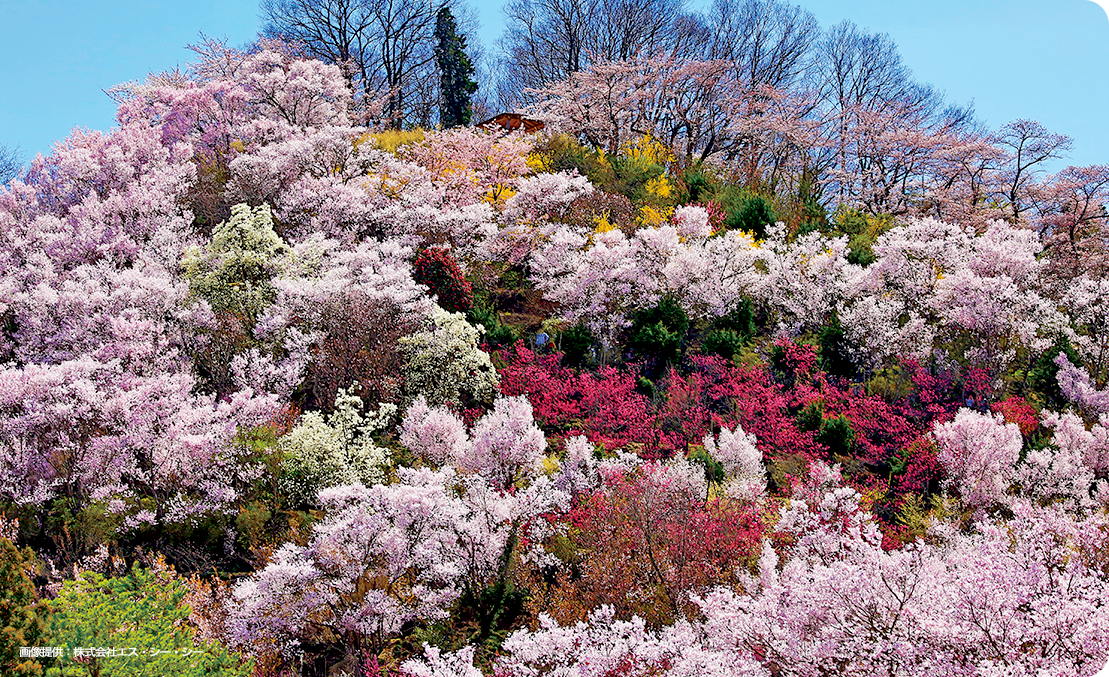
-
Fukushima’s
Spring Spectacular
“Hanamiyama”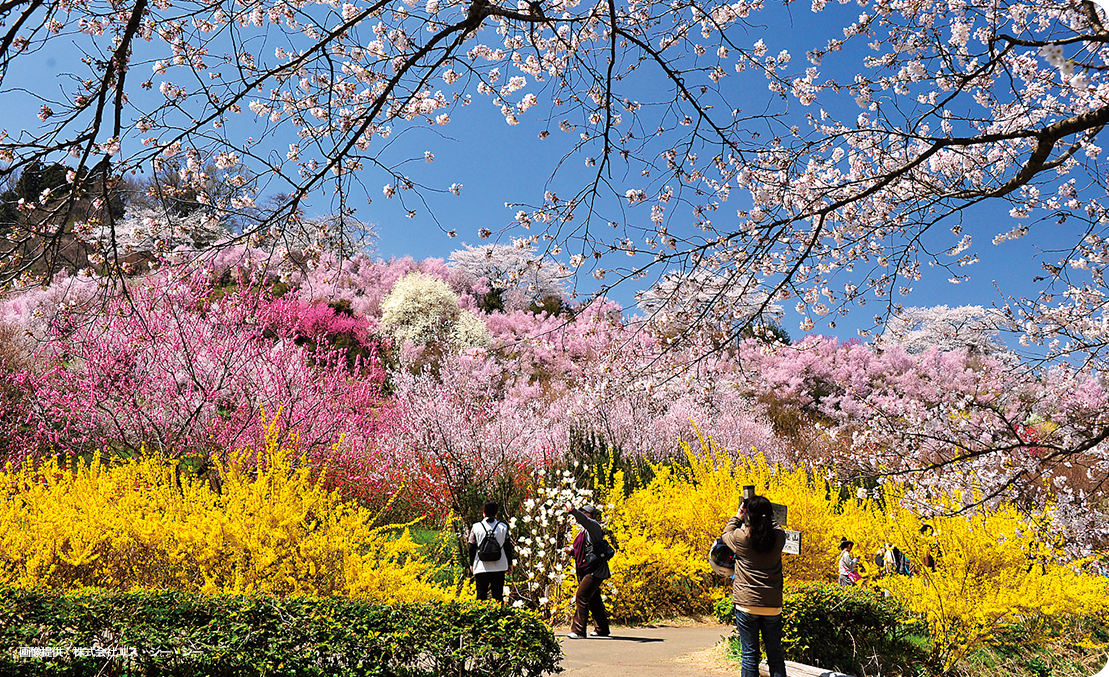

Breath the Spring Air
“Hanamiyama”
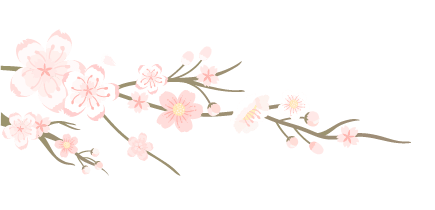
“A Utopia in Fukushima”
Spring is the most vibrant season in Fukushima City.
Famed photographer Shotaro Akiyama (1920 ~ 2003) visited Hanamiyama every year and said, “There is a utopia in Fukushima.” It now attracts people from across to Japan and is the premier tourist destination in Fukushima City.

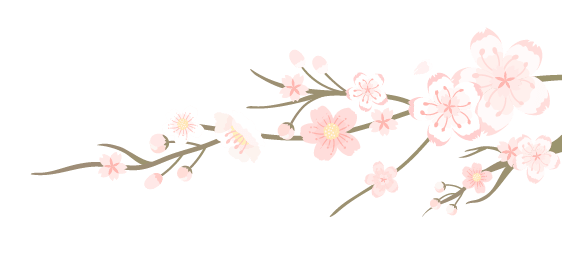
From among the flowers in full bloom, the view of Fukushima City stretches out before you.
In Spring the forsythia, maples, quince, peaches, plum and cherry blossoms all flowering together. The local farming community tend the mountainsides and fields of flowering trees covering the area in light pink to produce this “utopia.”
When the weather is good you can see the Azuma and Adatara Mountains to the west of the city. In spring when the snow starts to melt on the side of Mt. Azuma-Kofuji, the remaining snow makes the shape of a rabbit. Local residents call it the “Azuma Snow Rabbit.” If you climb to the top of Hanamiyama you can see the view of Fukushima City stretching out before you.


A man who loved flowers more than anyone Ichiro Abe (Hanamiyama Park 2nd Generation Owner)
Not many people know that Hanamiyama Park is actually private property. The 2nd generation owner of Hanamiyama Park Ichiro Abe and his father Isejiro originally raised silkworms, but at the start of the Showa Period (1926 ~ 1989) they decided to start producing flowering trees. The devoted themselves to cultivating new land which was the creation and development of Hanamiyama Park.
Ichiro Abe produced flowering trees and loved flowers more than anyone, “Hanamiyama is my life. I want many visitors to come every year, and have the same feeling for flowers that I have. It makes me very happy to know that my idea was not wrong.” Flowers can raise the spirits of many people.

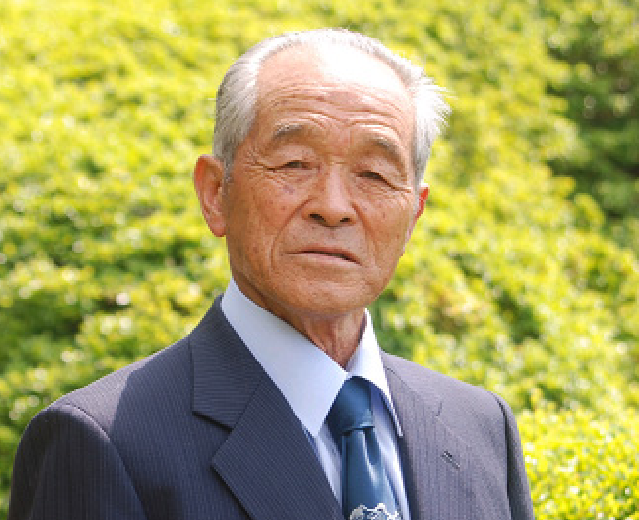
Flower Varieties & Seasons
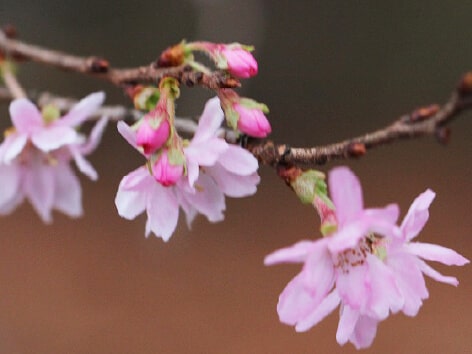
Autumnalis (Jugatsu-Zakura)Prunus Subhirtella
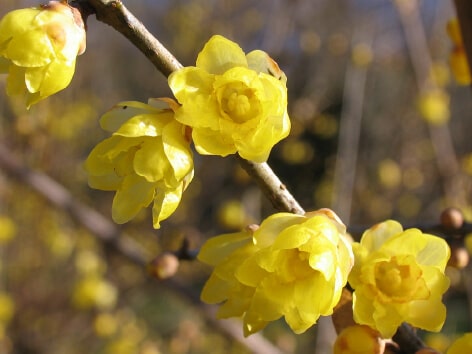
Japanese Allspice (Robai)Chimonanthus Praecox
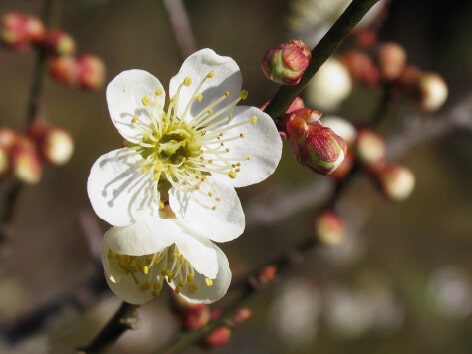
Plum (Ume)Prunus Mume
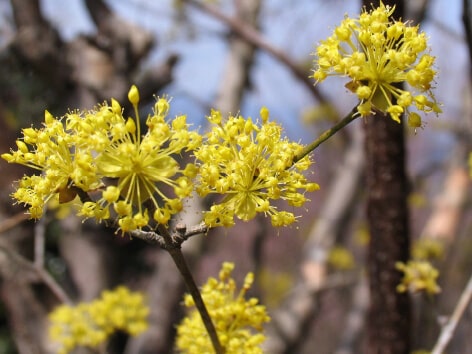
Japanese Cornel (Sanshuyu)Cornus Officinalis
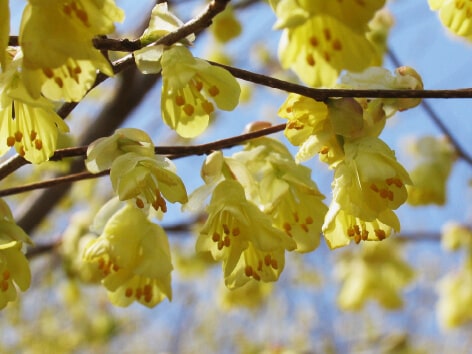
Buttercup Winterhazel (Hyuga-Mizuki)Corylopsis Pauciflora
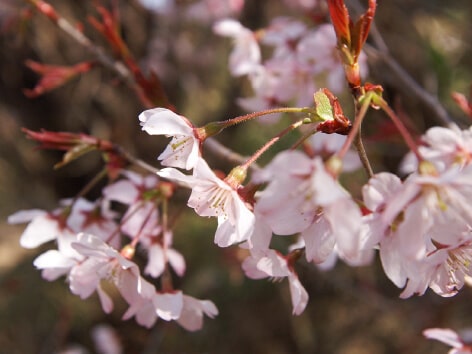
Tokai CherryPrunus Takenakae
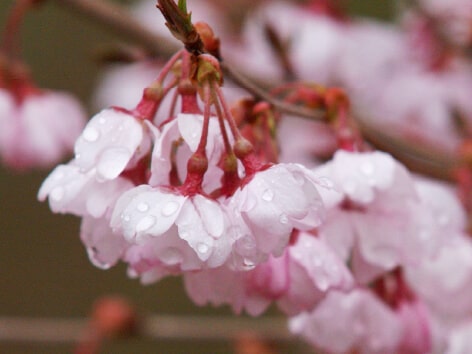
Higan CherryPrunus Subhirtella
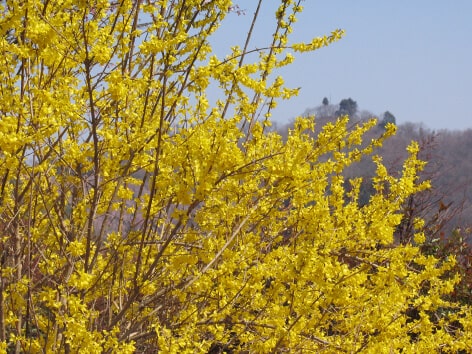
Forsythia (Rengyo)Forsythia Suspensa
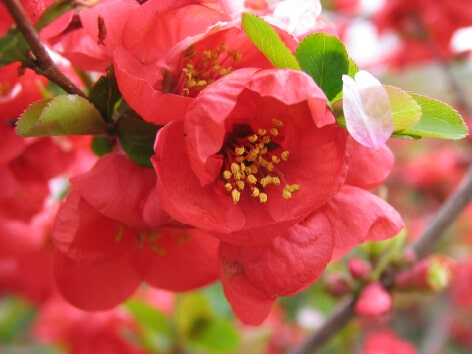
Japanese Quince (Boke)Chaenomeles Speciosa
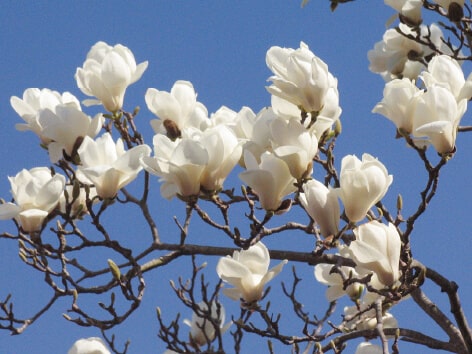
Yulan Magnolia (Haku-Mokuren)Magnoliaceae Magnolia Denudata
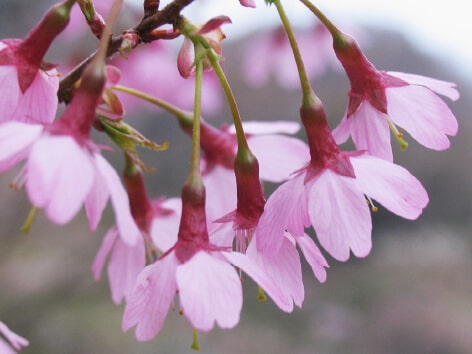
Okame CherryPrunus Incamp
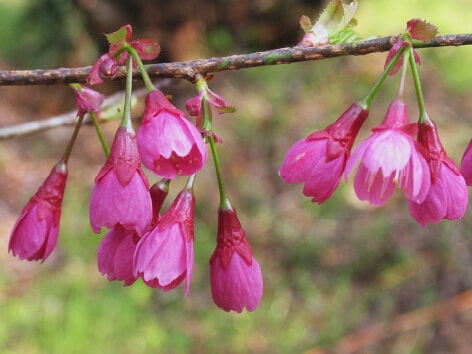
Taiwan Cherry (Kanhi-Zakura)Prunus Campanulata
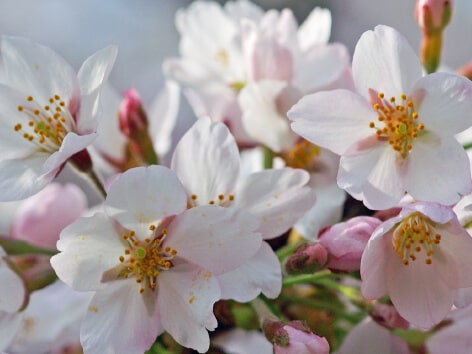
Somei-Yoshino CherryPrunus Cerasus
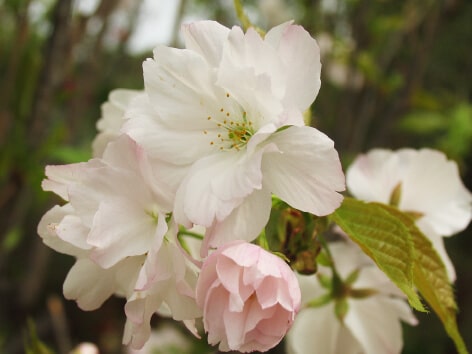
Amanogawa CherrySerrulata Erecta
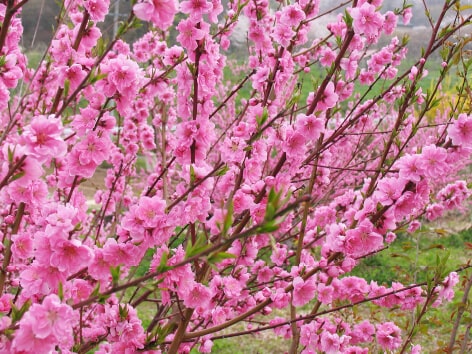
Flowering Peach (Hanamomo)Prunus Persica
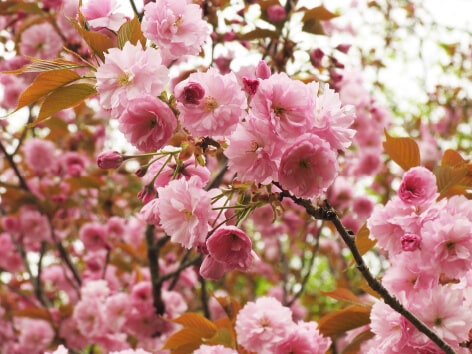
Double-Flowered Cherry (Yae-Zakura)Prunus Lannesiana
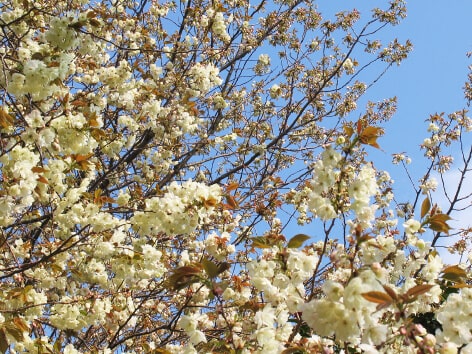
Ukon CherryPrunus Grandiflora
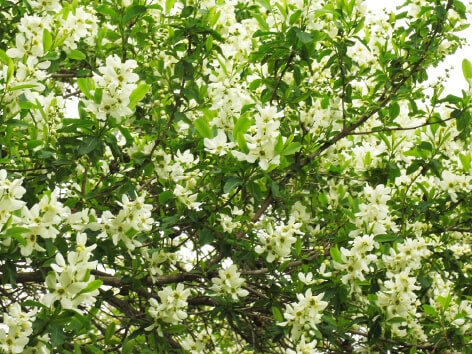
Pearlbush (Rikyubai)Exochorda Racemosa
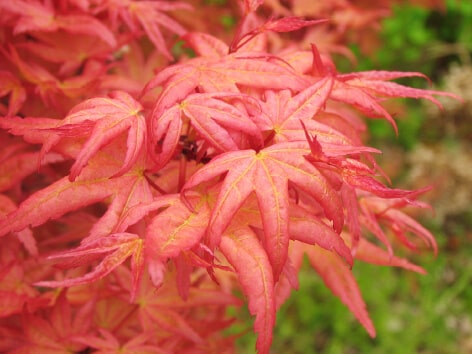
Deshojo MapleAcer Palmatum
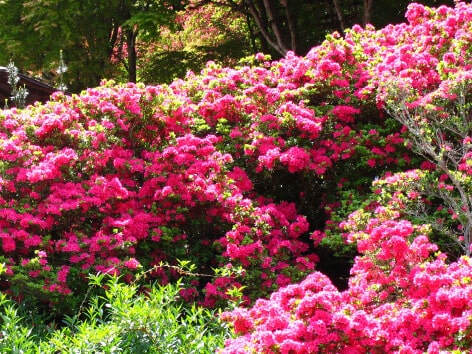
Satsuki AzaleaRhododendron Indicium
Access
to
Hanamiyama
-
Car~ 30 mins from Fukushima-Nishi IC on the Tohoku Expressway via routes 115, 4 and 114.
~ 30 mins from Fukushima-Iizaka IC on the Tohoku Expressway via routes 13, 4 and 115.
Bus~15 mins on Route 05-0 (Watari Minami-mawari) from Fukushima Station East Exit Bus Stop No.8 to Hanamiyama Iriguchi. Additional ~25 min walk.
TaxiTaxis run from JR Fukushima Station East and West Exits. (Fixed-price 'teigaku' taxis are available during peak periods, and will drop you closer to the Hanamiyama Park entrance than bus services)
Start from Hanamiyama
"Fukushima Flower Gallery"

Toilet

Temporary
Toilet

Wheelchair
Accessible Toilet

Baby
Chair

Baby Changing
Table

Ostomate

Night-Time
Light-Up





Tatenoyama Park / Hanamomo no Sato
Fukushima-shi, Iizaka-machi, Tatenoyama
Tatenoyama is located west of central Iizaka Onsen, and is a popular spot for walking and cherry blossoms. Hanamomo no Sato is located on a 8,000 m² private property where you can see over 300 flowering peach trees of 40 different varieties that have been collected from around the world.
- Train
- 15~30 mins walk from Iizaka Onsen Station on the Iizaka Line (Fukushima Kotsu)
- Car
- 10 ~ 15 mins from the Fukushima-Iizaka IC.
※ Parking: Tatenoyama Park: 40 Spaces, Hanamomo no Sato: 45 Spaces





Otowa Park & Hanamomo Park
Fukushima-shi, Iizaka-machi, Ginnan
This former test facility for the silk farming industry is close to the Fukushima City Hall Iizaka Office. The rows of cherry trees are all that remain of the former site. This is a popular spot for locals to hold hanami parties, and can be enjoyed by visitors to Iizaka Onsen.
- Train
- 10 mins walk from Hanamizuzaka Station on the Iizaka Line (Fukushima Kotsu)
- Car
- 10 mins from Fukushima-Iizaka IC






Mt. Shinobu
Fukushima-shi, Taishido 1
The Japanese witch-hazel blooms to signal the coming of spring, and many people come to Mt. Shinobu to see the cherry blossoms in mid-April. The area in front of Fukushima Gokoku Shrine is also lit-up every night during spring. You can also see the row of cherry blossoms in from of the Fukushima Taxation Office and around Iwaya Kannon.
- Bus
- Take the Momorin City Loop Bus to Fukushima TV. Additional 10 mins walk.
- Car
- 20 mins from Fukushima-Iizaka IC
※Parking: 30 Spaces




Arakawa Sakura-Zutsumi Park
Fukushima-shi,Yagita, Idogami 13-6
Around 220 cherry trees line the banks of the Arakawa River which flows into the Abukuma River. This popular hanami spot also offers a great view of the Snow Rabbit on Mt. Azuma-Kofuji which is a symbol of the city.
- Bus
- 25 mins walk from Fukushima Station, or Take the bus for Tsuchifune and gett off at Nishi Koko Iriguchi. Additional 10 mins walk.
- Car
- 15 mins from Fukushima-Nishi IC
※Parking: 20 Spaces


Daizoji Temple Weeping Cherries
Fukushima-shi, Oguraji, Jikkoku 7
Daizoji Temple is home to the 1,000-Armed Senju Kannon that is a national Important Cultural Property. There are 2 trees, a large 300 year old weeping cherry with a fascinating appearance, and a smaller offspring. It peaks in mid-April, and in early April you can see dogtooth violets along the path.
- Bus
- Take the JR Bus for Kawamata to Oguraji. Additional 20 mins walk.
- Car
- 25 mins from Fukushima-Nishi IC
※ Parking: 25 Spaces

The Hosui Cherry
Fukushima-shi, Matsukawa, Kanezawa,Kodeyamaura
The beautiful posture of this wheeping cherry makes it stand out. It peaks from mid to late April. It is located on private property but opened to the public during peak season. It casts a beautiful reflection in the neighboring pond.
- Bus
- Take the Fukushima Kotsu bus for Matsukawa via Fushiogami/Fukushima Medical University/Misato to Kamimyouchi Bus Stop. Additional 15 mins walk.
- Car
- 30 mins from Fukushima-Nishi IC


Hanayashiki Park
Fukushima-shi, Iino, Higashi Chinseki
This park features a lot of flowering peach trees, as well as forsythis and camellia, with a total of 7000 flowering trees. The handcrafted path leads up to a stunning view. Every year many photographers come to take photos of the magnificent scenery.
- Bus
- Take the Fukusima Kotsu bus for Iino. Get off at Iino Bus Stop. Additional 20 mins walk.
- Car
- 30 mins from Fukusima-Nishi IC
※Parking: 30 Spaces





Omorijoyama Park
Fukuhsima-shi, Omori, Hommaru 82
This park is related to the Date Clan. It is built on the former site of Omorijo Castle. Around 700 cherry blossoms bloom here in spring, and it is a popular hanami spot. It has amazing views, and there is a tea stand during peak season.
- Bus
- Take the Fukushima Kotsu bus for to Hirata. Get off at Shinobu Shicho Iriguchi. Additional 15 mins walk.
- Car
- 15 mins from Fukushima-Nishi IC
※ Parking: 69 Spaces


Jorakuen
Fukushima-shi, Sakuramoto, Uruihara 30
This traditional Japanese garden is modeled after the style of the Muromachi Period (1336 ~ 1573). It has cherry blossoms in mid-April, and rododendrons and irises in May. It is also known for the flowering Japanese clover in early autumn. Admission is 500 yen for adults, 250 yen for children.
- Bus
- Take the Fukushima Kotsu Bus for Tsuchifune. Get off at Haranomachi. Additional 10 mins walk.
- Car
- 15 mins from Fukuhsima-Nishi IC or Fukushima-Ozaso IC
※ Parking: 50 Spaces


Jitokuji Temple
Fukushima-shi, Sabara, Teramae 9
This weeping cherry is about 450 years old and blooms in mid-April. For many generations this cherry blossom has bloom when local farmers plant their seeds which is why it is also called the 'seed-planting sakura.' It is a registered natural monument of Fukushima City. The area has a good view of the city.
- Bus
- Take the Fukuhsima Kotsu Bus for Sabara. Get off at Azuma Rikujo Keigijo. Additional 20 mins walk.
- Car
- 20 mins from Fukushima-Nishi IC
※ Parking: 100 Spaces


Kumagaiso no Sato (Orchard Village)
Fukushima-shi, Matsukawa, Mizuhara, Kamakurayama
Around 5000 flowers bloom from mid to late May. Such a large scale wild collection of orchards is quite rare in Japan, and there are is protected by local community groups. There is an entrance to fee to help pay for preservation of the area.
- Bus
- Take the Fukuhsima Kotsu Bus for Mizuhara. Get off at Oigamori Bus Stop. Additional 45 mins walk.
- Car
- 15 mins by taxi from JR Matsukawa Station. 45 mins from Fukushima-Nishi IC.
※ Parking: 30 Spaces (No Large Buses)


Tsutsujiyama Park
Fukushima-shi, Tsuchiyu Onsen-machi, Hyuga
This park at the entrance to Menuma Pond was designed to showcase the native azaleas. It usually peaks in late May. The view from Menuma Pond is very beautiful.
- Car
- 50 mins by taxi from JR Fukushima Station, 60 mins walk from Tsuchiyu Onsen, or 25 mins drive from Fukuhsima-Nishi IC
※ Parking: 15 Spaces


Tsutsumigataira Lillies
Fukushima-shi, Tsuchiyu Onsen, Tstsumigataira
These Lillies bloom from late May to early June, and create a carpet of light pink flowers. They are beautiful in the sun and rain. There is an entrance fee to pay for preservation of the local environment.
- Car
- 50 mins by taxi from JR Fukushima Station, 40 mins walk from Tsuchiyu Onsen, or 25 mins drive from Fukushima-Nishi IC
※ Parking: 30 Spaces





Doaidate Park Hydrangeas
Fukushima-shi, Matsukawa, Doaidate 7
From early to mid-July around 4500 hydrangeas bloom across this 5 hectare park. You can enjoy walking through the park on sunny days, or strolling with an umbrella in the rainy season.
- Bus
- 5 mins by taxi or 30 mins walk from JR Matsukawa Station
- Car
- 40 mins from Fukushima-Nishi IC
※ Parking: 30 Spaces




Jododaira
Fukushima-shi, Tsuchiyu Onsen-machi, Washikurayama
A treasure trove of alpine flora representing Fukushima, including the prefectural flower rhoddendron (brachycarpum f. nemotoanum), iwakagami, aleutian avens, hare's-tail cottongrass and various flora along the hiking trails. ※ Closed during winter (Mid-November ~ Early April)
- Bus
- 90 mins from Fukushima Station West Exit on the Azuma Skyline Tour Bus (Seasonal)
- Car
- 45 mins from Fukushima-Nishi IC via Tsuchiyu Onsen
※ Parking: 300 spaces (Paid Parking)



